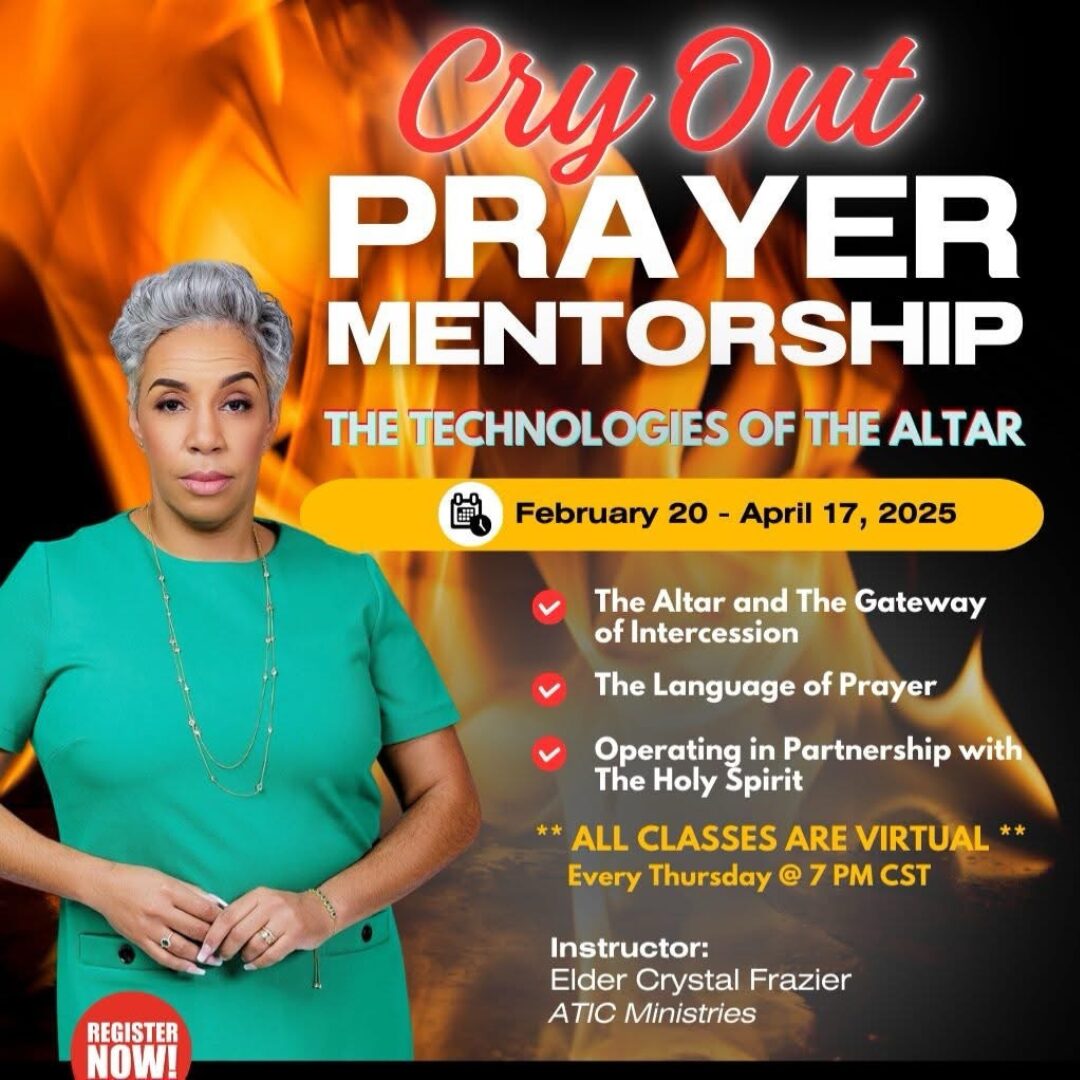Major Takeaways:
New York’s 400-year story shows how immigrants and innovators shaped not just a city but the nation’s character.
Criminal profiling has evolved from 19th-century speculation to modern data-driven techniques—yet bias still persists.
Artificial intelligence may promise progress, but it’s also straining America’s power grid and raising new ethical questions.
The City That Built America: New York’s Legacy, Criminal Profiling’s Dark History, and the Evolving Power of AI
This week on Viewpoints. To think that New York, since 1790, has been the largest city in the country, remains the largest, but there’s a reason for that. The timeless allure of this East Coast city.
Then… He speculated that he’s probably a very calm man because he was able to keep cool while murdering people out in the open on the streets. The rise of criminal profiling and why we’re so drawn to these cases. I’m Marty Peterson.
And I’m Gary Price. These stories in-depth this week on your Public Affairs magazine, Viewpoints. $5,000.
That’s the average amount of money people in the U.S. are now spending on gas in a year. Five grand. That’s crazy.
If you drive, you have to download Upside, the free app that gives you cash back every time you get gas. That’s right. You can earn real cash back with Upside just by buying the gas you’re already buying.
You can literally start earning cash back today. I use Upside every time I fill up. I’ve already made around $200, $300.
You’re putting gas in your car anyway. Why not get real cash back? If you like free money, download Upside. I’m saving the cash I earn from using Upside to help pay for a vacation later this year.
Download the free Upside app now to earn cash back every time you buy gas. Use promo code OWN to get an extra $0.25 per gallon on your first tank. You can cash out any time right to your bank, PayPal, or a gift card for Amazon and other brands.
Just download the free Upside app and use promo code OWN for a $0.25 per gallon bonus on your first tank. That’s code OWN for a $0.25 per gallon bonus. Stand at the edge of the Hudson River today, and it’s hard to imagine just what it looked like four centuries ago.
No bridges or skyline. Just open water and wild shoreline. In 1624, Dutch settlers landed on this coast and called it New Amsterdam.
Forty years later, the English seized control and renamed it New York. The capital of the United States was in New York City, something that most people don’t know. It was in New York City from 1785 through 1790, the Confederation Congress and then the first Congress of the United States.
George Washington was inaugurated as the first president in New York, the first Congress met in New York. That’s Sam Roberts, a longtime journalist for The New York Times and the author of the book The New Yorkers, 31 Remarkable People, 400 Years and the Untold Biography of the World’s Greatest City. Roberts says that many Americans, even New Yorkers themselves, don’t really know the full extent of the city’s interesting history.
Once figured out with a couple of demographers that as many as a billion people have lived in New York from the very beginning. Unfortunately, we don’t have a good record of the Lenape people, who were the first people who lived in New York for thousands of years before the Europeans came. But when you look at the history of the city, it is a history built by people.
The grid system, the system of streets, that rectangular grid that defined development in New York, the buildings, the Empire State Building that will always be the most iconic building in New York. Again, the Statue of Liberty, which all over the world became this welcoming symbol for immigrants who define New York. Today the city is home to more than 8 million residents and almost 40 percent were born outside the U.S., according to the New York City Department of Planning.
For so many, New York has long represented opportunity, progress, and the idea that if you work hard enough, you can achieve your dreams. Roberts highlights some of the stories of past New Yorkers who followed their dreams and stood up for what they believed in. One such narrative is that of Elizabeth Jennings Graham, an African-American woman who refused to get off a whites-only trolley in 1854.
Perfectly well-dressed, perfectly respectable, but it was a whites-only trolley and she sued. She sued the trolley company and her lawyer happened to be a man named Chester Arthur, a young lawyer who would later become the President of the United States. And as I point out in this book, she won her lawsuit in 1854 in Brooklyn Supreme Court.
And this was a hundred years before Rosa Parks. Her courage set a legal precedent and pushed the city into a new era of equality. And she wasn’t the only outspoken woman from New York to make a lasting impact.
Carmelia Goff was the daughter of Caribbean immigrants and championed women’s rights. She was instrumental in reviving a Brooklyn neighborhood that was a vast wasteland in the 1970s, East New York. It was just a bombed out section of the city.
And she, with the help of her neighbors, rebuilt that neighborhood, just like the Irish, the Italians, other ethnic groups did in the 19th century. She had the gumption, the guts, the courage, the energy with her neighbors to rebuild that neighborhood. And that’s what immigrants are doing today.
And immigrants have always done that. And they’re doing it all over the United States. And I think that is the spirit of New York, the spirit of America that I wanted to capture in this book, The New Yorkers.
And I think she, this woman, Carmelia Goff, is emblematic of that spirit and emblematic of the city of New York. While some New Yorkers come from generational wealth, many others come with nothing and get their foot in the door through any opportunity they can find. Throughout history, some of the biggest names in media, finance and other sectors have built their empires from the ground up in the Big Apple.
One of these titans is a man named James Gordon Bennett, who’s largely recognized as the founder of the modern newspaper. He was sort of a madman in his own way, but he really established what was called the Penny Press in New York. He knew what people wanted to read, and he gave it to them.
And what they wanted to read was news. He defined news about ordinary people, whether it was murders, whether it was financial news, whether it was gossip. And he built the New York Herald into a major newspaper.
In every facet of work and play, Robert says New Yorkers of the past and present are strong, steadfast and proud people who symbolize the resilience of the city. Whether it was the great fire during the Revolution, during the Brooklyn, during the brutal British occupation, whether it was through 9-11, whether it was the super storm Sandy, whether it was the flu epidemic of 1919, the recent pandemic. We have had the resilience to keep coming back.
New York remains the largest city in the country, and not just in size, but in imagination and opportunity. Its energy and vibrancy have always belonged to the people who built it, challenged it and refused to live anywhere else on earth. To find out more about this topic and our guest, Sam Roberts, visit viewpointsradio.org. For more behind-the-scenes, search Viewpoints Radio on Instagram, X and Facebook.
Also check out Robert’s book, The New Yorkers, 31 Remarkable People, 400 Years and the Untold Biography of the World’s Greatest City, available online and in select bookstores now. This segment originally aired in 2021 and has since been updated. Our writer-producer is Amira Zaveri.
Our studio manager is Jason Dickey. I’m Gary Price. This segment is sponsored by Capital One.
Banking with Capital One helps you keep more money in your wallet with no fees or minimums on checking accounts and no overdraft fees. What’s in your wallet? Terms apply. See CapitalOne.com slash bank for details.
Capital One N.A. Member FDIC. Coming up, how criminal profiling evolved from the streets of Victorian London to the databases of the digital age. When Viewpoints returns.
$5,000, that’s the average amount of money people in the U.S. are now spending on gas in a year. Five grand. That’s crazy.
If you drive, you have to download Upside, the free app that gives you cash back every time you get gas. That’s right. You can earn real cash back with Upside just by buying the gas you’re already buying.
You can literally start earning cash back today. I use Upside every time I fill up. I’ve already made around $200, $300.
You’re putting gas in your car anyway. Why not get real cash back? If you like free money, download Upside. I’m saving the cash I earn from using Upside to help pay for a vacation later this year.
Download the free Upside app now to earn cash back every time you buy gas. Use promo code OWN to get an extra $0.25 per gallon on your first tank. You can cash out any time right to your bank, PayPal, or a gift card for Amazon and other brands.
Just download the free Upside app and use promo code OWN for a $0.25 per gallon bonus on your first tank. That’s code OWN for a $0.25 per gallon bonus. With Progressive, it’s easy to reach customer service with our app, website, chat, or by phone.
Because when getting help is hard, it’s not help at all. A little help, a little help over here. Thank you for calling bench press assistance.
What? Due to excessive gym volume, all available spotters are currently lifting heavy weights off the chests of other bench pressers. Seriously? Please continue to hold, and we will remove the barbell from your chest in the order in which your cry for help was received. Getting assistance should be easy.
With Progressive, it is. Progressive Casualty Insurance Company and affiliates. At Charmin, we heard you shouldn’t talk about going to the bathroom in public, so we decided to sing about it.
Charmin Ultra Strong. You can use less, better than the rest. Charmin Ultra Strong.
Your booty pass the clean test. Diamond weave texture, it’s the best. Study up, teach a lesson on fresh.
Your booty pass the clean test. Yes, sir. Charmin Ultra Strong.
Charmin Ultra Strong with diamond weave texture. Cleans better than the leading one-ply brands, so you can use less. Enjoy the go with Charmin.
Most of us know the image. A dimly lit FBI office, corkboards lined with mugshots, endless red string connecting dozens of clues. Behind it all are a team of criminal profilers who are all part detectives and part psychologists.
But behind all the true crime podcasts and television drama lies a much more complicated picture. Rachel Corbett has been piecing this picture together for many years. Corbett is an investigative journalist and the author of The Monsters We Make, Murder, Obsession, and the Rise of Criminal Profiling.
For her, this isn’t just a deep dive study of a field. It’s personal. When I was a child, a man that I knew who was like a father figure, he was my mother’s partner for several years, ended up killing someone soon after they broke up.
And I was six years old when they met. And so my memories of him are really of a kind, loving, gentle man. And so when I found out years later that he murdered someone, a woman, his next partner, I couldn’t believe it.
It was totally baffling. And I got kind of obsessed with figuring out who he was, what was going on in his mind, how someone could do this unthinkable thing. And then, you know, of course, it’s, I come to realize, you know, it’s a very universal fascination.
What makes people commit the worst crimes that we can think of? In Corbett’s case, she talked to experts, combed through records, and put together a basic profile on her own. Still, none of the motives made complete sense. As much as I investigated Scott, the man, I never really came to any conclusions that were clear.
I looked at all the forensic evidence. I talked to sociologists about the prevalence of this kind of particular crime in this particular place. I looked at his childhood history, and I tried to profile him myself, basically.
And it didn’t really turn up anything satisfying. I left feeling like I still didn’t fully understand. And that desire to make sense of the senseless is at the heart of profiling itself.
Corbett explains how the field’s roots go back hundreds of years. I trace it back to the days of Jack the Ripper in Victorian England, which is when what’s commonly considered the first known criminal profile was written. A police surgeon named Thomas Bond wrote, well, he examined the forensic evidence, of course.
He looked at the bodies, looked at the physical clues. But he also decided to look more at the personality markers, the behavioral clues. He thought about, you know, what Jack might have been wearing.
He speculated that he’s probably a very calm man because he was able to keep cool while murdering people out in the open on the streets. Sadly, the person behind the Jack the Ripper killings was never caught or convicted. While this first criminal profile didn’t solve the case, it did change how investigators thought.
For the first time, they weren’t just blindly hunting a suspect. They spent time building an analysis and questioned why the person acted in certain ways. This small shift gained steam over time and transformed the art of profiling from speculation into one of law enforcement’s biggest tools today.
It took off in the 1970s when the FBI Behavioral Science Unit took off. I mean, actually, I should say the Behavioral Science Unit started when Howard Teton came to the FBI in the 60s. But in the 70s, as Ted Bundy was rampaging across the country, and soon you had John Wayne Gacy, and there was this feeling of a serial killer epidemic.
And the FBI kind of pounced on that fear. And they drummed it up actually a bit too. Like they exaggerated the numbers of murders that these people were committing, how many there were out there, how far they were traveling.
They exaggerated all those numbers. And then in the end, we’re able to get federal funds allocated from Congress. We’re able to expand their jurisdiction.
By the late 1970s, the FBI’s Behavioral Science Unit had formalized what had once been intuition. Agents began interviewing convicted murderers, documenting habits and tracing behavioral patterns in an attempt to predict who might offend again. Profiling offered a way to merge psychology with police work at a time when the number of serial killings seemed to be on the rise.
However, the media headlines didn’t quite match up with the national data. When you look at the numbers, there really wasn’t a dramatic uptick. There have been like upticks in these crimes throughout history.
There’s periods where they’re higher and lower and higher and lower. But this wasn’t actually anywhere near what they said. But they definitely put the cameras on these people.
Ted Bundy was all over the news. And it came at a time of the culture wars. So you had Reagan running on this concept of stamping out evil.
And these were perfect personifications of evil for him to campaign on. Suddenly, politicians all over the U.S. were campaigning on Bundy’s execution, like, I’m going to execute him faster if I get into office, and morbid stuff like that. Corbett says that Ted Bundy’s case blurred the boundaries between criminal study and public fascination.
This case captured the nation’s attention because Bundy seemed so ordinary. He was educated, polite, good-looking, and very likable. All of these traits shook up long-held ideas of how a killer looked or acted.
Even after Bundy was caught, the media frenzy didn’t stop there. He had a kind of remarkable trial. He escaped from jail twice and then represented himself at trial.
And this very, you know, got married on the stand. So, you know, he was quite a spectacle to watch too. So I think that’s part of the fascination with him.
You know, even the judge said when he was sentencing him for the murder of a 12-year-old girl, he said, you know, hey, partner, I don’t hold this against you. I think you’d be a great lawyer. It’s too bad you went the other way.
You know, I don’t have anything against you. Like this kind of weird, like even the judge couldn’t quite reconcile the man in front of him with the monster. And even decades later, this fascination with him hasn’t faded.
One similar recent case is that of the Long Island architect, who in 2023 was arrested and charged for the murders of seven women in New York. For many Americans, it came as a surprise because from the outside, he seemed like a normal guy who was married, successful and lived a quiet life in a quiet suburban neighborhood. He was an architect.
It’s like this, he was able to hold down a job. He had colleagues. So, you know, he wasn’t some like ranting and raving freak.
You know, he was somebody who blended into society, had a wife and kids even, you know. But I think it’s a combination of police failures, pretty catastrophic level. But also just that we have more technology now to track serial killers.
It’s very hard to be a serial killer now with cell phone towers and DNA and all the other things we can use to catch people now. Profiling has also evolved, but many of the old biases remain. Corbett points out that early profilers once looked for physical markers of criminality, like the shape of a head, a nose, a jaw.
They were often drawing from the same racial and class prejudices that existed in society at that time. Today, those patterns have been replaced by data points. Rather than facial features, profilers and algorithms now examine zip codes, family histories or social media activity to identify risk.
And while the approach has changed, the outcome can also be biased. In the book, I look at a really unsettling case of profiling in Florida, where they targeted children based on what their parents did. So if the parents were in jail or if there was domestic violence in the home, those children could then be targeted for enhanced policing as they’re growing up.
And of course, what happens is if you target somebody for policing, they end up, you end up catching them for crimes more often. Maybe it’s a little marijuana charge or they’re skipping classes, little things that get them into the system. And in the future, you know, I think the data-driven policing and profiling and with AI also is going to ramp up.
And I’d like to say that it would get better. You know, you get better data, you get better results. But it just hasn’t necessarily worked that way.
Technology may make profiling faster, but not necessarily smarter. Corbett warns that replacing human judgment with data doesn’t erase bias, but just hides it deeper behind code. As these systems grow more powerful, she says, the need for oversight has never been greater.
To learn more about criminal profiling and our guest, Rachel Corbett, head to viewpointsradio.org. Also, check out her new book, The Monsters We Make, Murder, Obsession, and the Rise of Criminal Profiling, now available in select bookstores and online. This story was written and produced by Amira Zaveri. Our studio manager is Jason Dickey.
I’m Marty Peterson. Viewpoints returns in just a moment. $5,000.
That’s the average amount of money people in the U.S. are now spending on gas in a year. Five grand. That’s crazy.
If you drive, you have to download Upside, the free app that gives you cash back every time you get gas. That’s right. You can earn real cash back with Upside.
Just by buying the gas you’re already buying. You can literally start earning cash back today. I use Upside every time I fill up.
I’ve already made around $200, $300. You’re putting gas in your car anyway. Why not get real cash back? If you like free money, download Upside.
I’m saving the cash I earn from using Upside to help pay for a vacation later this year. Download the free Upside app now to earn cash back every time you buy gas. Use promo code OWN to get an extra 25 cents per gallon on your first tank.
You can cash out anytime right to your bank, PayPal, or a gift card for Amazon and other brands. Just download the free Upside app and use promo code OWN for a 25 cents per gallon bonus on your first tank. That’s code OWN for a 25 cents per gallon bonus.
This is Viewpoints Explained. I’m Ebony McMorris. Have you noticed the cost of your electricity creeping up this year? You might not realize it, but this increase could be from artificial intelligence.
Behind every chatbot, image generator, and smart search tool is a huge network of data centers. All of this continuous computing requires enormous amounts of electricity to process data and keep these machines from overheating. While electricity costs are up across the board, towns near these big data centers are getting hit extra hard.
A recent Bloomberg analysis found that wholesale electricity prices in some of these areas have soared by as much as 270% over the last five years. Some policymakers are now exploring ways to make data center owners pay more for electricity costs so the burden doesn’t fall on residential consumers. Meanwhile, tech companies are investing in renewable microgrids, liquid cooling, and energy efficient computer chips to lower electricity use.
Still, efficiency alone can’t offset the expansion of new data centers coming online every month. In 2023, data centers used about 4% of all U.S. electricity, according to the U.S. Department of Energy. By 2028, it’s predicted that this number will triple.
The promise of AI may be limitless, but the U.S. power grid isn’t. What comes next is figuring out how to power this technology without overloading the system we all rely on. That’s a few points explained for this week, more in a moment.
Welcome to Culture Crash, where we examine what’s new and old in entertainment. Kevin Parker, the Australian hitmaker better known by his moniker Tame Impala, is a do-it-all musical guru who’s found a way to blend the pop sensibilities of Paul McCartney, a John Lennon vocal falsetto, and the psychedelic spark of Pink Floyd into a cocktail that fit in but stood out among the indie rock and electropop scenes of the 2010s. His 2015 album Currents is a classic among millennials, with tracks like The Less I Know The Better, Let It Happen, and New Person’s Same Old Mistakes racking up billions of streams across platforms and dominating Spotify-wrapped Instagram stories even years later.
Like all musicians, though, Parker’s output as Tame Impala is subject to change, and his latest album Deadbeat has drawn some polarized responses across the internet and from critics alike. Lead single End of Summer was noted for its more EDM-forward sounds, while his later singles were widely regarded as fun but less complex than some of his earlier work. And that may be true, but these songs still sound unmistakably like Tame Impala to me.
So yes, the album’s opener My Old Ways uses a head fake start that sounds like a voice note as a way to drop the listener into a vibe that’s more dance clubby than anything on Currents, but I disagree that that’s necessarily a bad thing, or that an artist should spend their lives chasing the high of their previous work. Parker is a husband and a father, as made clear by Deadbeat’s cover, which shows him with his daughter, and his new album isn’t steeped in quite as much existential dread and questioning as some of his past work. That’s probably by design though, and not a sign of creative decay.
A slower, more stripped back and bubbly sound seems to make sense for where he’s at in his life. Despite the polarized response, Deadbeat features a number of standout moments and tracks. I’m drawn to the romance of Peace of Heaven and the infectious fun of Dracula.
Tame Impala has evolved and Tame Impala will continue to evolve. Those albums still exist though, and his new phase offers enough infectious hooks and catchy melodies to keep me coming back. Will this album become a Tame Impala cult classic? I’m not sure, and only time will tell.
In the meantime though, I’ll be bopping along to Loser. I’m Evan Rook. And that’s Viewpoints for this week.
Follow us on Twitter, Facebook, and Instagram to learn more about upcoming shows, and find a library of past programs on Apple Podcasts, Google Play, and Spotify. Plus, you’ll always find previous segments and more information about our guests at ViewpointsRadio.org. Join us again next week for another edition of Viewpoints.














